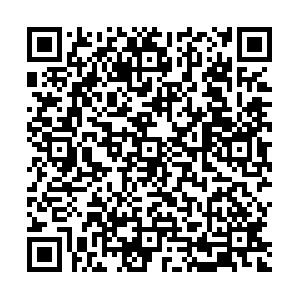| [1] |
郭小朝,刘宝善,马雪松,等.歼击机座舱通用显示信息及其优先级的确定[J].中华航空航天医学杂志,2006,17(4):260-263 Guo Xiaochao,Liu Baoshan,Ma Xuesong,et al.General information of display and its priority for advanced fighter cockpit[J].Chinese Journal of Aerospace Medicine,2006,17(4):260-263(in Chinese)
|
| [2] |
完颜笑如,庄达民,刘伟.脑力负荷对前注意加工的影响与分析[J].北京航空航天大学学报,2012,38(4):497-501 Wanyan Xiaoru,Zhuang Damin,Liu Wei.Analysis on effect of mental workload on preattentive processing[J].Journal of Beijing University of Aeronautics and Astronautics,2012,38(4):497-501(in Chinese)
|
| [3] |
吴旭,完颜笑如,庄达民.多因素条件下注意力分配建模[J].北京航空航天大学学报,2013,39(8):1086-1090 Wu Xu,Wanyan Xiaoru,Zhuang Damin.Attention allocation modeling under multi-factor condition[J].Journal of Beijing University of Aeronautics and Astronautics,2013,39(8):1086-1090(in Chinese)
|
| [4] |
Senders J W.The human operator as a monitor and controller of multidegree of freedom systems[J].IEEE Transactions on Human Factors in Electronics,1964,5(1):2-5
|
| [5] |
Carbonell J R.A queueing model of many-instrument visual sampling[J].IEEE Transactions on Human Factors in Electronics,1966,7(4):157-164
|
| [6] |
Sheridan T B.On how often the supervisor should sample[J].IEEE Transactions on Systems Science and Cybernetics,1970,6(2):140-145
|
| [7] |
Bohnen H,Leermakers M.Sampling behavior in a four instrument monitoring task[J].IEEE Transactions on Systems,Man and Cybernetics,1991,21(4):893-897
|
| [8] |
Wickens C D,Alexander A L.Attentional tunneling and task management in synthetic vision displays[J].International Journal of Aviation Psychology,2009,19(2):182-199
|
| [9] |
Wickens C D,McCarley J S,Steelman-Allen K S.NT-SEEV:a model of attention capture and noticing on the flight deck[J].Proceedings of the Human Factors and Ergonomics Society Annual Meeting,2009,53(12):769-773
|
| [10] |
Miller S M,Kirlik A,Kosorukoff A.Ecological validity as a mediator of visual attention allocation in human-machine systems[R].NASA-04-6,2004
|
| [11] |
Matsui N,Bamba E.Consideration of the attention allocation problem on the basis of fuzzy entropy[J].Association Symposium of Measurement and Automatic Control,1996, 22(12):27-32
|
| [12] |
Wanyan X R,Zhuang D M,Wei H Y,et al.Pilot attention allocation model based on fuzzy theory[J].Computers & Mathematics with Applications,2011,62(7):2727-2735
|
| [13] |
庄达民,完颜笑如.飞行员注意力分配理论与应用[M].北京:科学出版社,2013:31-45 Zhuang Damin,Wanyan Xiaoru.Pilot attention allocation theory and applications[M].Beijing:Science Press,2013:31-45(in Chinese)
|
| [14] |
Tombu M,Seiffert A E.Attentional costs in multiple-object tracking[J].Cognition,2008,108(1):1-25
|
| [15] |
张吉军.模糊层次分析法[J].模糊系统与数学,2000,14(2):80-88 Zhang Jijun.Fuzzy analytic hierarchy process[J].Fuzzy System and Mathematics,2000,14(2):80-88(in Chinese)
|
| [16] |
Wei H Y,Zhuang D M,Wanyan X R,et al.An experimental analysis of situation awareness for cockpit display interface evaluation based on flight simulation[J].Chinese Journal of Aeronautics,2013,26(4):884-889
|
| [17] |
Rice S,Keller D,Trafimow D.Time pressure heuristics can improve performance due to increased consistency[J].The Journal of General Psychology,2012,139(4):273-288
|
| [18] |
Lavie N.Attention,distraction,and cognitive control under load[J].Current Directions in Psychological Science,2010,19(3):143-148
|

 点击查看大图
点击查看大图






 下载:
下载:
